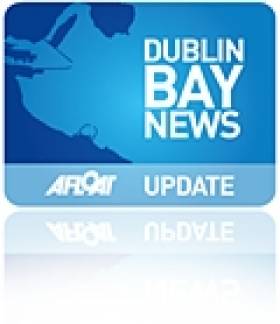Displaying items by tag: Bathymetric Survey
New Bathymetric Maps of Ireland’s Coastline Released by INFOMAR
INFOMAR, a joint venture by the Geological Survey Ireland and the Marine Institute, has launched a collection of 18 high-resolution bathymetric maps of Ireland’s coastal waters. The Blue Scale Map Series is the culmination of over a decade of work and highlights the unique and intricate landscapes lying beneath the waves.
Each week, INFOMAR will release a new map of a different section of the Irish coastline. The latest in the series is the blue scale bathymetric map of Loop Head, County Clare on the Shannon Estuary.
The area was first surveyed in 2009 on board the RV Celtic Voyager, with the INFOMAR team mapping a total of 162km2 of seabed along the River Shannon and west of Loop Head. Mapping continued in the region on board the RV Celtic Voyager, RV Keary, RV Geo & MV Cosantóir Bradán between 2011 – 2014, resulting in an area of over 2000km2 of previously unmapped Clare coastal waters being surveyed in high resolution.
Earlier this year, INFOMAR’s inshore team, on board the RV Galtee, continued mapping shallower waters beneath the Iconic Cliffs of Moher, Liscannor Bay and Kilstiffin Reef.
The Blue Scale Map Series offers a new and unique way not only to showcase the mapping effort to date but also to visualize and communicate complex scientific information to the wider public. As with all INFOMAR data, these high-resolution maps are available for free to download and have huge potential to communicate with local coastal communities and raise awareness of the importance of maintaining the health and integrity of our marine environment.
Ireland’s coastline is approximately 3,171km in length and boasts some of the most unique and dynamic marine environments in Europe. Since 2006, INFOMAR’s seabed mapping efforts have been instrumental in enhancing our understanding of Ireland's underwater landscape. The Blue Scale Map Series not only highlights the topography of the coast in remarkable detail but also paves the way for the future management of Ireland’s marine resource.
Download a high res version of the image here
Underwater Dublin Bay Survey to Start on Friday
























































